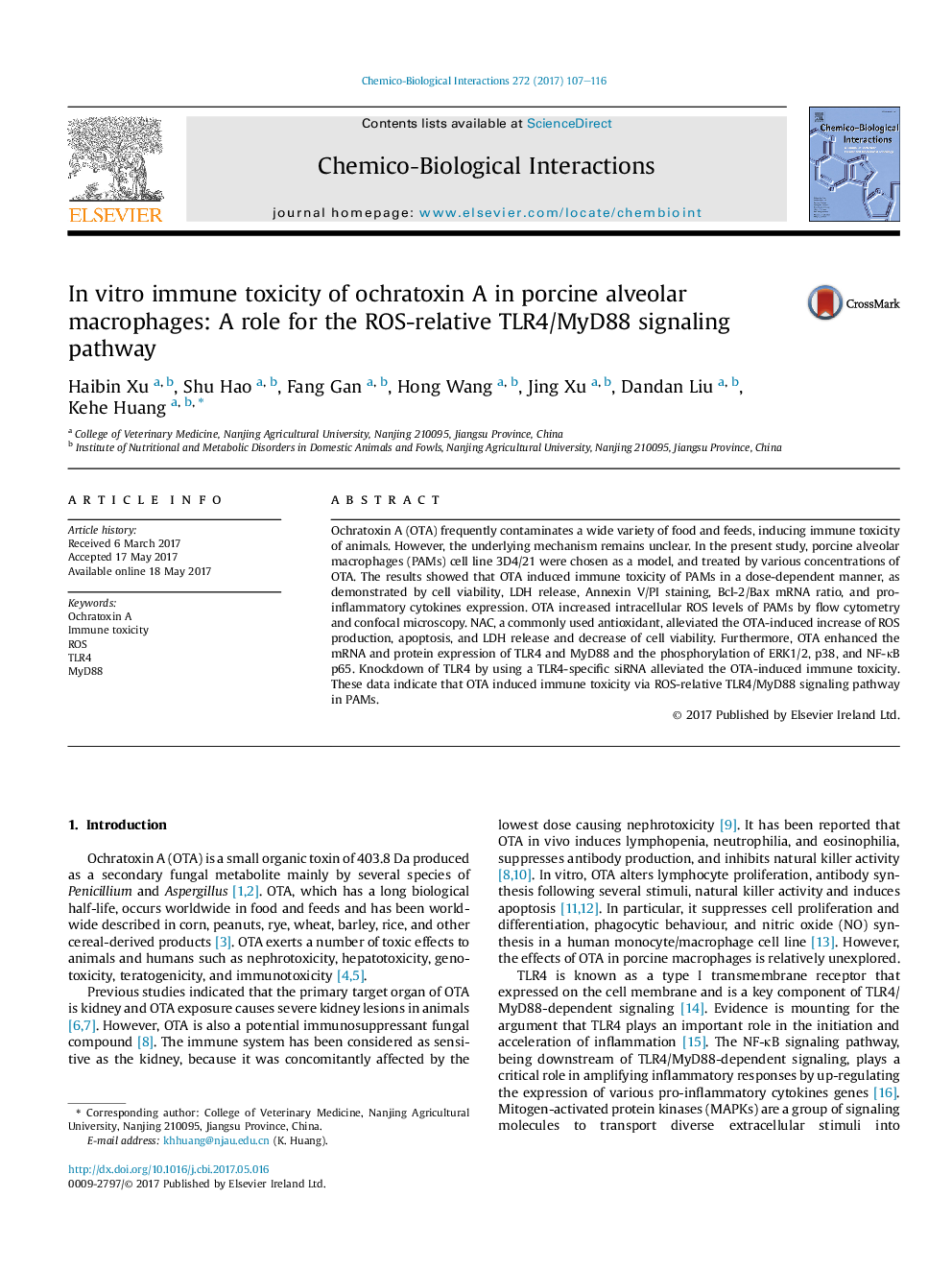| Article ID | Journal | Published Year | Pages | File Type |
|---|---|---|---|---|
| 5559481 | Chemico-Biological Interactions | 2017 | 10 Pages |
â¢OTA induced immune toxicity in a dose-dependent manner in porcine alveolar macrophages.â¢OTA-induced immune toxicity was related to intracellular oxidative stress.â¢OTA induced immune toxicity by ROS-relative TLR4/MyD88 signaling pathway.
Ochratoxin A (OTA) frequently contaminates a wide variety of food and feeds, inducing immune toxicity of animals. However, the underlying mechanism remains unclear. In the present study, porcine alveolar macrophages (PAMs) cell line 3D4/21 were chosen as a model, and treated by various concentrations of OTA. The results showed that OTA induced immune toxicity of PAMs in a dose-dependent manner, as demonstrated by cell viability, LDH release, Annexin V/PI staining, Bcl-2/Bax mRNA ratio, and pro-inflammatory cytokines expression. OTA increased intracellular ROS levels of PAMs by flow cytometry and confocal microscopy. NAC, a commonly used antioxidant, alleviated the OTA-induced increase of ROS production, apoptosis, and LDH release and decrease of cell viability. Furthermore, OTA enhanced the mRNA and protein expression of TLR4 and MyD88 and the phosphorylation of ERK1/2, p38, and NF-κB p65. Knockdown of TLR4 by using a TLR4-specific siRNA alleviated the OTA-induced immune toxicity. These data indicate that OTA induced immune toxicity via ROS-relative TLR4/MyD88 signaling pathway in PAMs.
